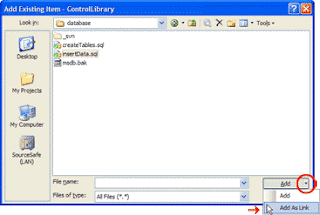If you're like me, you find the standard .NET way to parse Enums pretty awkward:
string aStr = "Truncate";
FileInfo aFN = (FileInfo) Enum.Parse(
typeof(FileInfo), aStr);
First, we have to provide the type of the enumeration twice. Second, I personally hate nested parentheses. I just cannot read the code with too many parentheses.
What I suggest is a thin wrapper:
public static class EnumParser<tEnum>
where tEnum : struct
{
public static tEnum Parse(string theVal)
{
return (tEnum)Enum.Parse(
typeof(tEnum), theVal);
}
public static tEnum Parse(string theVal, tEnum theDef)
{
try { return Parse(theVal); }
catch (ArgumentException) { return theDef; }
}
}
After several years of programming in C# I found I constantly use the exact same approach in most or all of my projects so I added it to my small C# toolkit.
The initial example would look more elegant with this new class in scope:
string aStr = "Truncate";
FileInfo aFN = EnumParser<FileInfo>.Parse(aStr);
The second overload allows us to use a default value:
string aStr = "Unknown";
FileInfo aFN = EnumParser<FileInfo>.Parse(
aStr, FileInfo.Truncate);
The provided solution is good but not perfect. Let's create another version of the EnumParser class:
public static class EnumParser
{
public static tEnum Parse<tEnum>(
string theVal) where tEnum : struct
{
return (tEnum)Enum.Parse(
typeof(tEnum), theVal);
}
public static tEnum Parse<tEnum>(
string theVal, tEnum theDef) where tEnum : struct
{
try { return Parse<tEnum>(theVal); }
catch (ArgumentException) { return theDef; }
}
}
As you see, we moved from a generic type to a non-generic type with two generic methods. Now let's look at the usage:
string aStr = "Truncate";
FileInfo aFN = EnumParser.Parse<FileInfo>(aStr);
The usage example when we don't specify a default value is almost identical to that of the generic type. However, things change significantly when a default value comes into play:
string aStr = "Unknown";
FileInfo aFN = EnumParser.Parse(aStr, FileInfo.Truncate);
As you see, we don't even specify the generic method arguments and the code will still compile successfully. The reason is: the compiler can resolve the arguments of the generic method from the argument that we specified. Our default value argument has now two roles: first, it is the value that will be returned in case the string is not recognized; second, it is an implicit type specifier for a generic method.
This is, of course, my favorite way to parse enums.
Cheers,
Kirill






